Recent Blog Posts
Marijuana DUI a Growing Concern in California
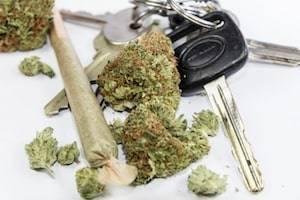 California law enforcement officers have faced a growing challenge over the past two years: how to keep the roadways safe from people driving under the influence of marijuana.
California law enforcement officers have faced a growing challenge over the past two years: how to keep the roadways safe from people driving under the influence of marijuana.
Marijuana DUI Arrests Have Risen Since 2016
Two major events have led to an increase in marijuana use in California and a corresponding concern about driving under the influence of cannabis. First, Proposition 64, the Medicinal and Adult-Use Cannabis Regulation and Safety Act, was passed in November 2016; this allowed individuals to grow and use marijuana for their own recreational purposes. Second, Proposition 64 also legalized the sale of marijuana to anyone age 21 or older, effective January 1, 2018.
Drugged driving arrests have risen significantly in California since the state legalized the use of recreational marijuana. The Orange County crime lab reported that requests to process blood samples related to marijuana DUI arrests rose 40% between November 2016 and June 2017. In addition, the California Highway Patrol reported that marijuana DUI arrests increased 31% from January to August 2018 and that injuries attributed to marijuana DUIs doubled.
Can I Be Charged With DUI When Sleeping in My Car?
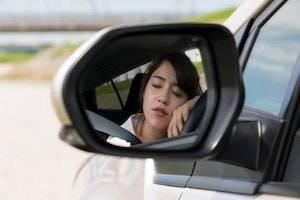 Drinking and driving inarguably puts everyone’s safety at risk. Sometimes, a driver leaves an establishment after consuming alcohol, only to realize that their intoxication was more severe than they originally estimated. Safety-conscious drivers may decide to pull their vehicle to the side of the road, find a rest stop, or even park at a gas station to take a quick nap. Although this decision ultimately prevents a potentially catastrophic accident, it also invites curious police officers to investigate the situation. DUI charges are possible in these cases, even when a drunk driver is parked and sleeping safely inside their vehicle.
Drinking and driving inarguably puts everyone’s safety at risk. Sometimes, a driver leaves an establishment after consuming alcohol, only to realize that their intoxication was more severe than they originally estimated. Safety-conscious drivers may decide to pull their vehicle to the side of the road, find a rest stop, or even park at a gas station to take a quick nap. Although this decision ultimately prevents a potentially catastrophic accident, it also invites curious police officers to investigate the situation. DUI charges are possible in these cases, even when a drunk driver is parked and sleeping safely inside their vehicle.
DUI in a Parked Car
It is possible to be charged with DUI while in a parked car. However, a police officer must typically be able to show that you voluntarily moved your vehicle before the arrest. Voluntary movement may include something as minimal as a car rolling down a driveway after disengaging the parking brake. Other possible evidence that may show a driver moved their car while intoxicated includes:
Which Is More Dangerous While Driving: Drinking or Texting?
 For decades, drunk driving was considered the most dangerous driving practice. However, in recent years, texting and cell phone usage give stiff competition for that top spot. Distracted driving leads to thousands of injuries and countless deaths every day in the United States.
For decades, drunk driving was considered the most dangerous driving practice. However, in recent years, texting and cell phone usage give stiff competition for that top spot. Distracted driving leads to thousands of injuries and countless deaths every day in the United States.
With today’s busy schedules, people often use their driving time as a prime opportunity to multitask. Distractions come from sources such as personal grooming, speaking to other passengers, and eating. Texting and other cell phone use is by far the most dangerous type of distraction. Given what we now know, considering both safety and the legal repercussions, which is the riskiest driving behavior: drinking or texting?
Safety Considerations
Overall, the prevalence of DUI is on a downward trend, while the frequency of texting while driving continues to rise. Although texting usually does not constantly affect a driver like driving while intoxicated does, it can cause a person to take their eyes off of the road for an unpredictable length of time. A distraction for even a split second increases the likelihood of an accident by 23%, a rate similar to the probability of an accident after drinking four beers. According to the National Highway Traffic Safety Administration (NHTSA), both behaviors are equally impairing to a driver’s ability to drive. Consider the following statistics:
Tips To Achieve The Best Results During a DUI Traffic Stop
 Do you ever get so caught up in your thoughts while driving that your brain goes into an “auto-pilot” mode and self-navigates the vehicle the rest of the way to your destination? Even if you arrive safely, not remembering the trip is frightening; however, it is much scarier when police lights are what brings you back to full awareness. Adding a potential DUI to the ordeal becomes the figurative “icing on the cake.” Here are a few tips and tricks to help you navigate the tricky waters of a traffic stop:
Do you ever get so caught up in your thoughts while driving that your brain goes into an “auto-pilot” mode and self-navigates the vehicle the rest of the way to your destination? Even if you arrive safely, not remembering the trip is frightening; however, it is much scarier when police lights are what brings you back to full awareness. Adding a potential DUI to the ordeal becomes the figurative “icing on the cake.” Here are a few tips and tricks to help you navigate the tricky waters of a traffic stop:
Avoid Being Stopped
Preventing a problem is better than fixing one after it becomes a situation. While advising the avoidance of the “auto-pilot” scenario is helpful, no one is perfect, and the mind is difficult to control. With that in mind, semi-conscious driving is not as attention-grabbing as other behaviors. The top offenses leading to police stops include:
Protecting Against the Use of Deceptive Practices By Law Enforcement
 Police officers may not take or search property without just cause, nor can they force anyone to testify against themselves. These laws, along with many others, protect the public from becoming victims of an increasingly powerful justice system, and they place a burden on the shoulders of the police department to complete the investigative steps that are necessary for learning the truth of a particular incident. Unfortunately, myriad excuses exist as to why many law enforcement officials continually fail to meet their requirements and protect citizens’ rights. Instead of putting in the time and effort to obtain their information ethically, many cops use deceptive practices during a criminal investigation.
Police officers may not take or search property without just cause, nor can they force anyone to testify against themselves. These laws, along with many others, protect the public from becoming victims of an increasingly powerful justice system, and they place a burden on the shoulders of the police department to complete the investigative steps that are necessary for learning the truth of a particular incident. Unfortunately, myriad excuses exist as to why many law enforcement officials continually fail to meet their requirements and protect citizens’ rights. Instead of putting in the time and effort to obtain their information ethically, many cops use deceptive practices during a criminal investigation.
At a Traffic Stop
One of the most common questions a police officer asks after pulling a driver over is, “Do you know why I stopped you?” This question is not an attempt at polite conversation or a way to "break the ice." The officer hopes the driver will voluntarily confess to a crime, and not necessarily the alleged offense which caused them to pull the driver over in the first place. Additionally, officers frequently stop drivers under the pretense of warning them of a “blown tail light” or other alternate non-moving violation. During this type of “good samaritan” stop, if any evidence presents itself, such as the odor of alcohol which may be indicative of a DUI, an officer will happily use it to their advantage.
Travel to Canada May Be Off Limits If You Have A DUI Conviction
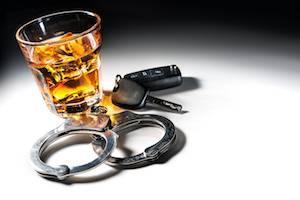 Millions of Americans travel back and forth to Canada every year. Most of these visits are short day-trips into the country or last only for an overnight stay. When asked at the port of entry, the three primary reasons which people gave for travel are: pleasure, business, and visiting family. It may surprise you to learn that many of these attempted visits were unsuccessful due to an outstanding charge here in the United States. If you have been convicted of driving under the influence (DUI), you may want to reconsider any prospect of traveling to visit our northern neighbors.
Millions of Americans travel back and forth to Canada every year. Most of these visits are short day-trips into the country or last only for an overnight stay. When asked at the port of entry, the three primary reasons which people gave for travel are: pleasure, business, and visiting family. It may surprise you to learn that many of these attempted visits were unsuccessful due to an outstanding charge here in the United States. If you have been convicted of driving under the influence (DUI), you may want to reconsider any prospect of traveling to visit our northern neighbors.
Canada Restricts Admittance
Relations between the United States and Canada are amicable, and travel between the two countries is relatively easy. Although you do not need a passport to cross over from the United States into Canada, one is necessary for admittance into the United States on your return trip. Entrance is relatively easy, on a general basis. The Canadian Border Services Agency (CBSA) agent will ask you a series of questions. One query is, “Do you have any criminal convictions?”
What to Expect During a Field Sobriety Test
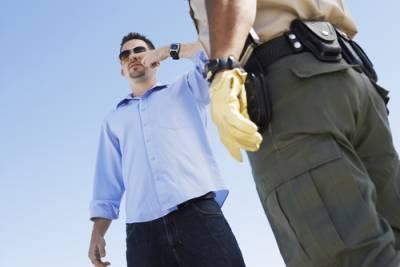 While there are a few exceptions to the rule, officers cannot typically stop a driver unless they have reasonable cause to suspect wrongdoing (that includes traffic violations). However, once a driver has been stopped, the officer may then search for any additional signs of a potential crime. More specifically, they look for signs of intoxication, such as slurred speech, bloodshot eyes, or balance issues. If flagged for any one of the alleged “tell-tale signs” of intoxication, the driver may then be subjected to a field sobriety test. Learn more about them, and how you can fight a DUI charge, with help from the following information. (Note: you are not required to engage in field sobriety testing.)
While there are a few exceptions to the rule, officers cannot typically stop a driver unless they have reasonable cause to suspect wrongdoing (that includes traffic violations). However, once a driver has been stopped, the officer may then search for any additional signs of a potential crime. More specifically, they look for signs of intoxication, such as slurred speech, bloodshot eyes, or balance issues. If flagged for any one of the alleged “tell-tale signs” of intoxication, the driver may then be subjected to a field sobriety test. Learn more about them, and how you can fight a DUI charge, with help from the following information. (Note: you are not required to engage in field sobriety testing.)
“Standardized” Field Sobriety Tests
Before the late 1970s, law enforcement lacked a consistent method to detect intoxication among drivers. Instead, they were forced to rely on their own judgment and a variety of tests with unknown accuracy rates. Then, in 1977, the NHTSA initiated a study of the various FSTs being used. Their hope was that a reliable and “scientific” method would emerge. Enter today’s version of the Standardized Field Sobriety Test – a battery of tests that officers routinely use to determine if a driver is intoxicated. These include the:
Everyday Items That Can Give a False Positive on a Breathalyzer
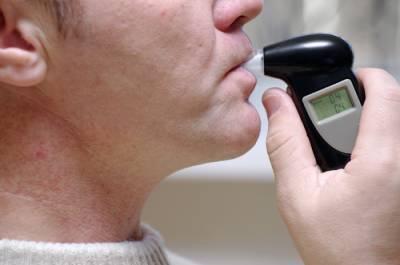 If you have never been pulled over for drunk driving and received a breathalyzer test, the technology might seem infallible – it was developed by law enforcement, after all. However, as outlined in the following sections, breathalyzers (and other sobriety testing methods) are anything but foolproof. In fact, there are several everyday items – things that would never lead to actual intoxication – that may cause a false positive on a breathalyzer.
If you have never been pulled over for drunk driving and received a breathalyzer test, the technology might seem infallible – it was developed by law enforcement, after all. However, as outlined in the following sections, breathalyzers (and other sobriety testing methods) are anything but foolproof. In fact, there are several everyday items – things that would never lead to actual intoxication – that may cause a false positive on a breathalyzer.
The Complex and Inaccurate Nature of Breathalyzers
Breathalyzers are not perfect devices. They must be calibrated regularly, and the officer using it may not administer the test correctly. Yet, even in perfect conditions (i.e. a well-calibrated device, proper use, etc.), a breathalyzer may be inaccurate.
In one peer-reviewed study, breathalyzers had an error margin of about 50 percent. Moreover, the study authors determined that a blood alcohol concentration (BAC) level of 0.10 on a breathalyzer could represent an actual BAC of anywhere from 0.05 percent (below the legal limit) to 0.15 percent. As such, a breathalyzer cannot unequivocally provide a positive unless the driver’s BAC registers high enough to overcome the error margin.
How Do I Determine My Blood Alcohol Level? Am I Safe to Drive?
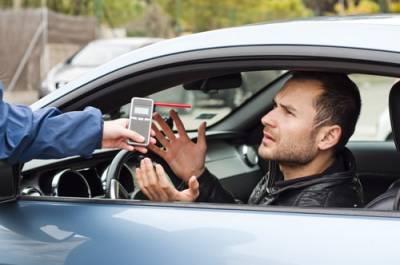 One of the phrases that DUI defense attorneys hear the most is: “I felt fine to drive. I shouldn’t have been over the limit. How can it be that the test shows I am over the limit?”
One of the phrases that DUI defense attorneys hear the most is: “I felt fine to drive. I shouldn’t have been over the limit. How can it be that the test shows I am over the limit?”
There answer is that there are many possibilities. There is always the possibility that the testing apparatus or procedure was flawed. Another is that your blood alcohol rose after you stopped driving, and prior to testing.
There is another possibility that gets much less airplay: your metabolism is just not “normal” on the day in question.
How the Body Metabolizes Alcohol
Studies show that there is a vast difference in the way we metabolize alcohol, both in different people and on different days for the same individuals. Not a lot of people discuss this phenomenon, but scientists have sat a group of people down and measured their blood alcohol from the point of no drinks to the point of quite a few drinks. They have done this with males and females, empty stomach and a full stomach, and different forms of alcohol. Ultimately, the results showed that some people reach a peak blood alcohol in as little as fifteen minutes; others take well over two hours.
Last Call in California - How Might Extending the Time Impact Your Risk of a DUI Charge?
 California’s nightlife is artistic, musical, fashionable, and fun. It also ends at two in the morning, which is a bit early for some. A bill, entitled “Let Our Communities Adjust Late Night Act” and introduced by Senator Scott Wiener, could change that by extending the last call until 4 a.m. Supporters believe that the bill’s passing could improve safety for the state’s nightlife crowd, but naysayers are concerned it could increase the volume of drunk drivers on the road. Who is right, and how might the extension impact your risk of a DUI charge? The following explains.
California’s nightlife is artistic, musical, fashionable, and fun. It also ends at two in the morning, which is a bit early for some. A bill, entitled “Let Our Communities Adjust Late Night Act” and introduced by Senator Scott Wiener, could change that by extending the last call until 4 a.m. Supporters believe that the bill’s passing could improve safety for the state’s nightlife crowd, but naysayers are concerned it could increase the volume of drunk drivers on the road. Who is right, and how might the extension impact your risk of a DUI charge? The following explains.
Safety, State Revenue, and Local Venues
Legislators and authorities have long considered California’s nightlife as a problem to “manage,” but that is starting to change. Finally, they see its true potential – a way to increase state revenue and the bottom line of local venues. Part of that could be related to the increasing number of people traveling in and out of the state for leisure activities, but it could also have something to do with the Ghost Ship warehouse fire that killed dozens of music fans. By keeping safe, licensed establishments open longer, similar tragedies are far less likely to occur.







